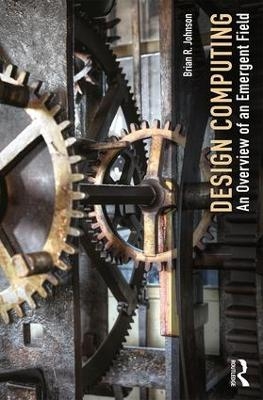
Design Computing
Routledge (Verlag)
978-1-138-93097-1 (ISBN)
Brian R. Johnson, Associate Professor of Architecture and Director of the Design Machine Group at the University of Washington, is also past president and recipient of two Awards of Excellence from the Association for Computer Aided Design in Architecture (ACADIA). His 35-year teaching career has witnessed the emergence of design computing.
Foreword Preface Acknowledgements 1. Introduction Design Computing: An Uneasy Juxtaposition The Built Environment Design Computing Design Computing Summary Suggested Reading References Part 1: Starting Points 2. Models Symbolic Models Finite Element Models Statistical Models Analogue Models Sources of Error Summary References 3. The Built Environment Curators of the Environment The Missing Productivity Gains The Internet of Things AEC Data Summary Suggested Reading References 4. Thinking Inside the Box Virtuality is Real Computer Memory is Lumpy Computer Memory is Sequential Code: Representing Thought Standard Representations Files and Directories Summary Suggested Reading References 5. Doing What Designers Do Graphics 3D Graphics: data + algorithm Applications Across the Building Lifecycle Operation Summary Suggested Reading References Part 2: The Grand Challenges 6. Design Problems: What are they? Defining the Problem Design Spaces Puzzle Making The Importance of Problem Definition The Problem of Solutions Summary Suggested Reading References 7. Cognition: How Designers Think Designing as Process The Role of Memory The Roles of Certainty, Ambiguity, Emergence and Flow Design as Social Action Tools Interact with Cognition Summary Suggested Reading References 8. Representation: Capturing Design Representation and Cognition Common Representations and their Problems Alternative Representations Challenges to the Single-model Concept Conversion between Representations The Round-tripping Problem Summary Suggested Reading References 9. Interface: Where the action is The Interactive Paradigm Deciphering Intent: small screens, shaky hands & fat fingers Where the action is New technology, emergent opportunities Ubiquitous Computing Summary Suggested Reading References 10. Practice: Data, Documents and Power The challenge of doing ethical work The productivity challenge Construction process changes Information Value: sources and sinks Good Data: finding and keeping what you need Access to Data: managing focus Computable designs Facility management Process, Representation & Human organization The Decline of Typical Conditions Big Data: design v. form-finding Research, Development and Continuous Learning Summary Suggested Reading References 11. Expertise: Challenges and Opportunities Architects are generalists Asking the right questions at the right time Drawings are never complete Expertise and the Framing Problem Consultants and the Round-trip Problem Growth and change Harvesting and Feeding Leaf-node knowledge Summary Suggested Reading References 12. Solutions: Generation and Refinement The existence of solutions Incremental Improvement: sweat-stained design Objective Functions Solution by inspection State space neighborhoods Selecting Design Moves Evaluation (comparing apples and oranges) Stopping rules The creative machine The creative designer Summary Suggested Reading References 13. Buildings: Computation Sources and Sinks Efficient Production Beyond the thermostat and the water cooler Managing resource use Big cities, big data and the effort to get smart Virtuality and buildings Summary Suggested Reading References 14. Pedagogy: Teaching the New Designer Digital Natives vs. Digital Immigrants The collapsing options model What to teach? Summary References
| Erscheinungsdatum | 07.02.2017 |
|---|---|
| Zusatzinfo | 19 Line drawings, black and white |
| Verlagsort | London |
| Sprache | englisch |
| Maße | 156 x 234 mm |
| Gewicht | 430 g |
| Themenwelt | Kunst / Musik / Theater ► Design / Innenarchitektur / Mode |
| Informatik ► Grafik / Design ► Film- / Video-Bearbeitung | |
| Informatik ► Weitere Themen ► CAD-Programme | |
| Technik ► Architektur | |
| ISBN-10 | 1-138-93097-0 / 1138930970 |
| ISBN-13 | 978-1-138-93097-1 / 9781138930971 |
| Zustand | Neuware |
| Haben Sie eine Frage zum Produkt? |
aus dem Bereich


